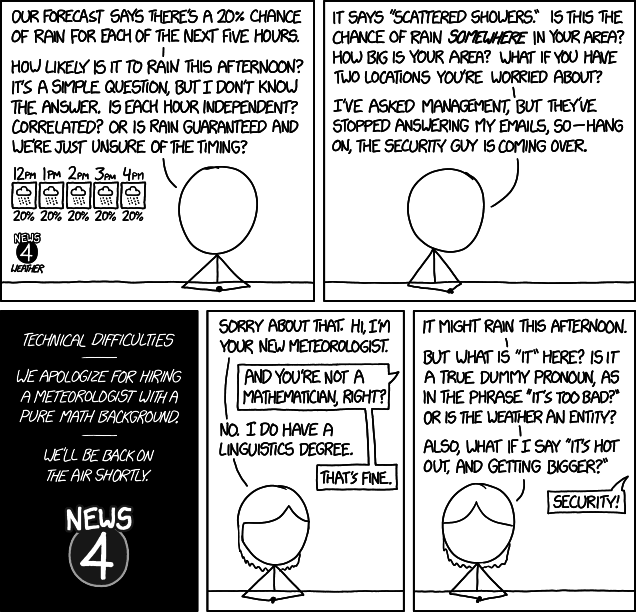

You've looked at prevailing wind patterns for this time of year, current wind velocity and direction, air pressure and temperature isoclines, and the strength of Emily herself.

In collaboration with other weather offices in Canada and the United States, your team has been gathering data to try to predict when and where Hurricane Emily will make landfall. You've watched her gain strength and pick up speed as she heads toward the United States coast. As a meteorologist, you have been tracking Hurricane Emily for days now, starting from when she first appeared on satellite images as a swirl of cloud thousands of kilometres off the coast in the Atlantic Ocean. The city and its industries also need time to prepare for the hurricane in order to take the necessary precautions to avoid the potential for environmental catastrophe that comes with high winds and damaging debris. You want to give residents enough time to prepare for the storm and evacuate to safer locations if necessary. You and your team of meteorologists are about to kick into high gear and begin issuing hurricane warnings to the area. You can see she is crossing the Atlantic Ocean, and your Nova Scotia weather observation office and this little park is in the middle of her path, along with thousands of other homes and businesses. You are a meteorologist and right now you are watching real-time satellite images of Hurricane Emily. But you know this scene will change in the next few days. From your office window, you can see children playing in the park.


 0 kommentar(er)
0 kommentar(er)
